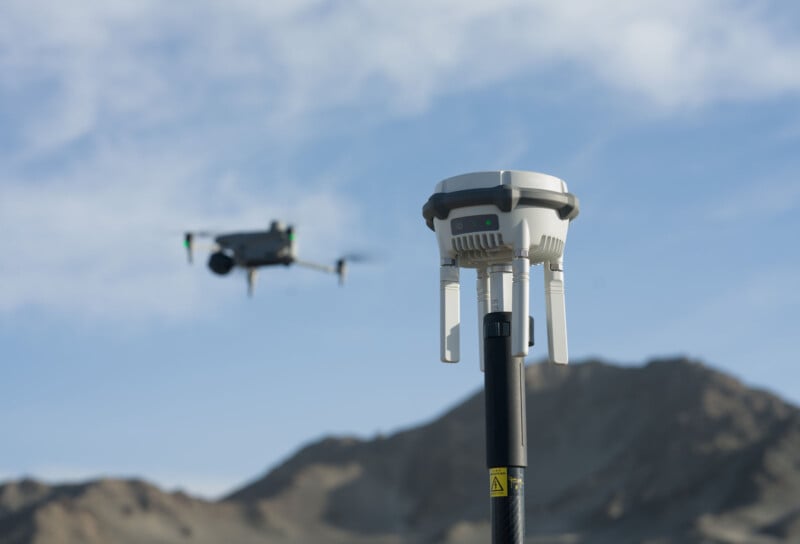![]()
DJI’s new Matrice 4 Series drones incorporate advanced technology and multiple sensors to improve performance and versatility for a wide range of enterprise users.
Unlike recent drones like the DJI Neo, the DJI Matrice 4 Series are built for industrial customers like safety inspectors, law enforcement, search and rescue, and agricultural observation. But that doesn’t mean DJI isn’t concerned with bringing improved ease of use to its industrial Matrice drones. To that end, the DJI Matrice 4T and Matrice 4E are more compact, easier to use, and more versatile in terms of imaging capabilities.
With the Matrice 4 Series, DJI is ushering in a new era of intelligent aerial operations. In equipping our industry-leading enterprise drones with AI, search and rescue teams can save lives faster,” says Christina Zhang, Senior Director of Corporate Strategy at DJI.
![]()
“Moreover, the intelligent features in the Matrice 4 Series will be raised to a new level, enabling enterprise drones to better address the escalating operational demands in different complex scenarios.”
One way the Matrice 4T and 4E can handle more complex scenarios is through the use of multiple image sensors. Both drones feature medium telephoto and telephoto cameras with 48-megapixel sensors. The medium-tele camera has a 70mm equivalent f/2.8 lens and a Type 1/1.3 CMOS image sensor. The telephoto module has a much longer 168mm equivalent f/2.8 lens and a Type 1/1.5 sensor that DJI says can capture details from up to 250 meters (820 feet) away. Further, it has a laser rangefinder that can measure distances from up to 1,800 meters (5,905 feet).
![]()
The Matrice 4T is designed for things like emergency response, public safety, and resource management, so it also has an infrared thermal camera that captures images up to 1,280 by 1,024 pixels. An included NIR auxiliary light can illuminate objects up to 100 meters (328 feet) away. It also has a 24mm wide-angle lens (48-megapixel Type 1/1.3 sensor) and an IR-cut filter.
The DJI Matrice 4E is built for surveying, mapping, construction, and inspection applications, where resolution is paramount. It supports high-speed surveying work with a 24mm wide-angle lens, a 20-megapixel Micro Four Thirds image sensor, and a mechanical shutter. This camera can shoot in orthophoto and oblique photography modes with mapping flight speeds up to 21 meters per second. An included Smart 3D Capture mode enables the drone to create rough models and precise mapping routes on a connected remote control, allowing users to measure irregular buildings. Per DJI, it can also display virtual space routes and waypoint photos, improving surveillance workflows.
![]()
![]()
Both new Matrice 4 Series drones include new software for diverse applications. The drones can perform surveillance and searches using a cruise control mode. When paired with the DJI Pilot 2 app, it’s possible to visualize on a map precisely where the Matrice 4 drone has already searched, making it easier to map out an efficient and timely route during time-sensitive operations. DJI also provides an SDK for drones so people can create tools specific to their needs. Both drones also feature new artificial intelligence-based subject detection, allowing users to quickly identify objects like vehicles and animals.
Since work doesn’t always stop when the Sun sets, the Matrice 4 drones feature extensive improvements to night mode. The 4T and 4E promise improved nighttime performance thanks to larger apertures and better low-light capabilities. They also both feature six high-definition low-light fisheye lenses that enhance visual low-light positioning, meaning that obstacle avoidance, rerouting, and return-to-home performance are better in the dark than before. When visibility is poor due to fog, haze, or humidity, a new Electronic Dehazing feature can improve image clarity, like the Dehaze slider in Adobe Lightroom.
![]()
 DJI D-RTK 3
DJI D-RTK 3DJI also unveiled new accessories, including a DJI AL1 SpotLight to illuminate objects from a distance and a DJI AS1 Speaker that can send audio up to 300 meters (984 feet) away. A new D-RTK 3 Multifunctional Station improves positioning accuracy and image transmission at high altitudes and in areas without cellular networks. The D-RTK 3 can also mark ground control points for the drone.
DJI says it is improving user controls over data. To that end, US-based users can no longer sync their flight logs with DJI servers, a move that secures data and likely serves to address increasing concerns in the United States over Chinese companies.
![]()
“Any personal data shared for account registration is further secured with AES-256 encryption. Operators can easily delete any data they have shared through their DJI account or by contacting DJI Support. Since 2017, we have regularly submitted our products for third-party security audits and certification, including Booz Allen Hamilton, FTI Consulting, and Kivu Consulting,” DJI explains.
Image credits: DJI



 English (US) ·
English (US) ·